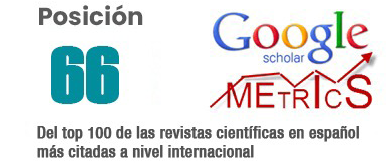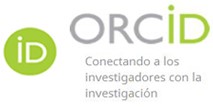Padlet: Technological tool for the teaching-learning process in the subject Clinical Surgical Nursing
DOI:
https://doi.org/10.62452/tfqqqv61Keywords:
Teaching-learning process, technological tool, nursingAbstract
The teaching-learning process (PEA) is comprehensive and complex, aimed at the development of skills and abilities. It is directed by subject programs, with attractive objectives, methods and strategies that facilitate learning. The two fundamental actors of the PEA: the student and teacher; They play an important role in building knowledge and developing critical thinking. Teaching has been based on traditional methods, however, new pedagogical currents have shown that the student has a dynamic and interactive function. The use of (ICT) and (TAC), through the implementation of tools in the educational field, has been relevant. At the Instituto Superior Tecnológico Bolivariano, the Padlet tool has been used in various subjects, particularly in Clinical Surgical Nursing, as a strategy to improve the PEA. A quantitative, descriptive and cross-sectional study was carried out with the objective of evaluating the impact of the Padlet tool on the PEA of the Clinical Surgical Nursing subject, with a sample of 50 students. They expressed satisfaction with the frequent use of the tool, it facilitated collaborative work, case analysis and knowledge retention. It was concluded that the use of the Padlet significantly improved the PEA in the subject.
Downloads
References
Andrey Bernate, J. A., & Vargas Guativa, J. A. (2020). Desafíos y tendencias del siglo XXI en la educación superior. Revista de Ciencias Sociales (Ve), 26. https://www.redalyc.org/journal/280/28064146010/html/
Carhuas Malpartida, A. D. (2024). El PADLET en el aprendizaje colaborativo de los estudiantes del área de educación para el trabajo del L.I.I.P “EL AMAUTA” de Cerro de Pasco—2021. (Tesis de grado). Universidad Nacional Daniel Alcides Carrión.
De la Torre Navarro, L. M., & Domínguez Gómez, J. (2012). Las TIC en el proceso de enseñanza aprendizaje a través de los objetos de aprendizaje. Revista Cubana de Informática Médica, 4(1), 83-92. http://scielo.sld.cu/scielo.php?script=sci_arttext&pid=S1684-18592012000100008
Delgado-Ramírez, J. C., Chamba-Gomez, F. D., Cuenca-Masache, D. T., & Ancajima-Mena, S. D. (2022). Padlet como Herramienta de Difusión Digital en la Investigación Formativa de Estudiantes Universitarios. Revista Tecnológica-Educativa Docentes 2.0, 14(2), 63-72. https://doi.org/10.37843/rted.v14i2.294
Hordatt Gentles, C., & Haynes Brown, T. (2021). Latin American and Caribbean teachers¿ transition to online teaching during the COVID-19 pandemic: Challenges, changes and lessons learned. Pixel-Bit, 61, 131-164. https://doi.org/10.12795/pixelbit.88054
Jiménez González, A., & Robles Zepeda, F. J. (2016). Las estrategias didácticas y su papel en el desarrollo del proceso de enseñanza aprendizaje. EDUCATECONCIENCIA, 9(10), 106–113. https://doi.org/10.58299/edu.v9i10.218
Mina, A., Guevara, M., Intriago, C., & Ponce, Y. (2023). Herramientas tecnológicas aplicadas en tiempos de Postpandemia para la formación de los estudiantes del Ecuador. Revista Científica Arbitrada Multidisciplinaria PENTACIENCIAS, 5(2), 314-326. https://www.editorialalema.org/index.php/pentaciencias/article/view/520
Navarrete Enríquez, R., Remache Cachimuel, J., & Reyes, V. M. (2024). Uso de herramientas digitales y rendimiento académico en estudiantes de enfermería: Un estudio de caso en un Instituto Tecnológico. Prohominum, 6(2). https://doi.org/10.47606
Downloads
Published
Issue
Section
License
Copyright (c) 2025 Irina García-Martínez, Pamela Kasandra Vecilla-Nicola, Gilberto Suárez-Suárez, Kety Bernardes-Carballo (Autor/a)

This work is licensed under a Creative Commons Attribution-NonCommercial-ShareAlike 4.0 International License.
Authors who publish in Revista Metropolitana de Ciencias Aplicadas (REMCA), agree to the following terms:
1. Copyright
Authors retain unrestricted copyright to their work. Authors grant the journal the right of first publication. To this end, they assign the journal non-exclusive exploitation rights (reproduction, distribution, public communication, and transformation). Authors may enter into additional agreements for the non-exclusive distribution of the version of the work published in the journal, provided that acknowledgment of its initial publication in this journal is given.
© The authors.
2. License
The articles are published in the journal under the Creative Commons Attribution-NonCommercial-ShareAlike 4.0 International License (CC BY-NC-SA 4.0). The terms can be found at: https://creativecommons.org/licenses/by-nc-sa/4.0/deed.en
This license allows:
- Sharing: Copying and redistributing the material in any medium or format.
- Adapting: Remixing, transforming, and building upon the material.
Under the following terms:
- Attribution: You must give appropriate credit, provide a link to the license, and indicate if any changes were made. You may do this in any reasonable manner, but not in any way that suggests the licensor endorses or sponsors your use.
- NonCommercial: You may not use the material for commercial purposes.
- ShareAlike: If you remix, transform, or build upon the material, you must distribute your creation under the same license as the original work.
There are no additional restrictions. You may not apply legal terms or technological measures that legally restrict others from doing anything the license permits.




